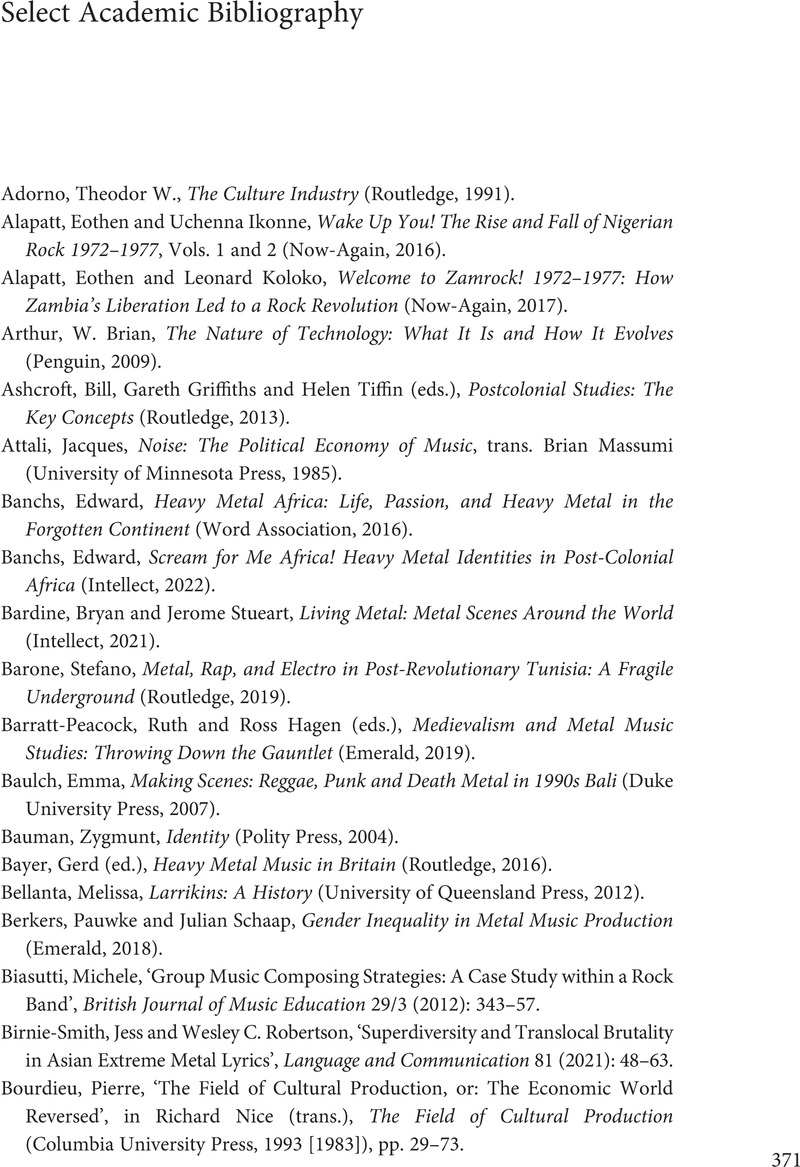Book contents
- The Cambridge Companion to Metal Music
- Cambridge Companions to Music
- The Cambridge Companion to Metal Music
- Copyright page
- Contents
- Figures
- Tables
- Notes on Contributors
- 1 Introduction
- 2 Get Your Double Kicks on Route 666
- Part I Metal, Technology and Practice
- Part II Metal and History
- Part III Metal and Identity
- Part IV Metal Activities
- Part V Modern Metal Genres
- Part VI Global Metal
- Select Academic Bibliography
- Select Journalistic Bibliography
- Index
- References
Select Academic Bibliography
Published online by Cambridge University Press: 31 August 2023
- The Cambridge Companion to Metal Music
- Cambridge Companions to Music
- The Cambridge Companion to Metal Music
- Copyright page
- Contents
- Figures
- Tables
- Notes on Contributors
- 1 Introduction
- 2 Get Your Double Kicks on Route 666
- Part I Metal, Technology and Practice
- Part II Metal and History
- Part III Metal and Identity
- Part IV Metal Activities
- Part V Modern Metal Genres
- Part VI Global Metal
- Select Academic Bibliography
- Select Journalistic Bibliography
- Index
- References
Summary

- Type
- Chapter
- Information
- The Cambridge Companion to Metal Music , pp. 371 - 379Publisher: Cambridge University PressPrint publication year: 2023

